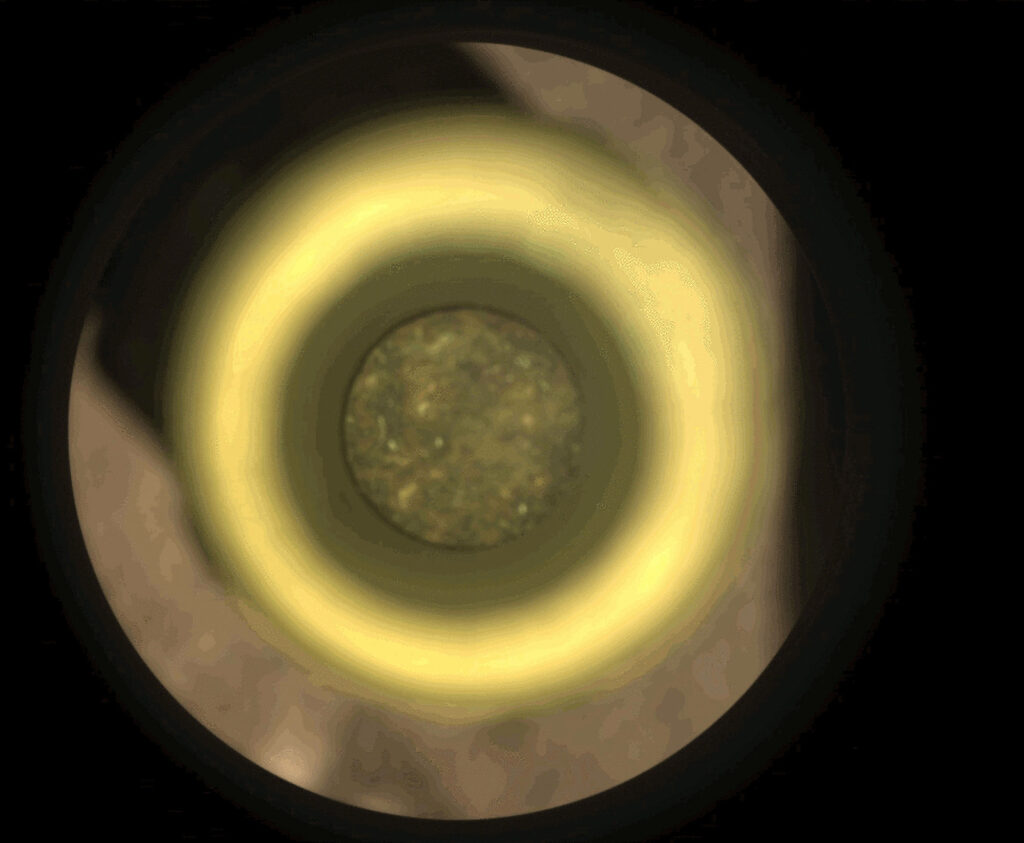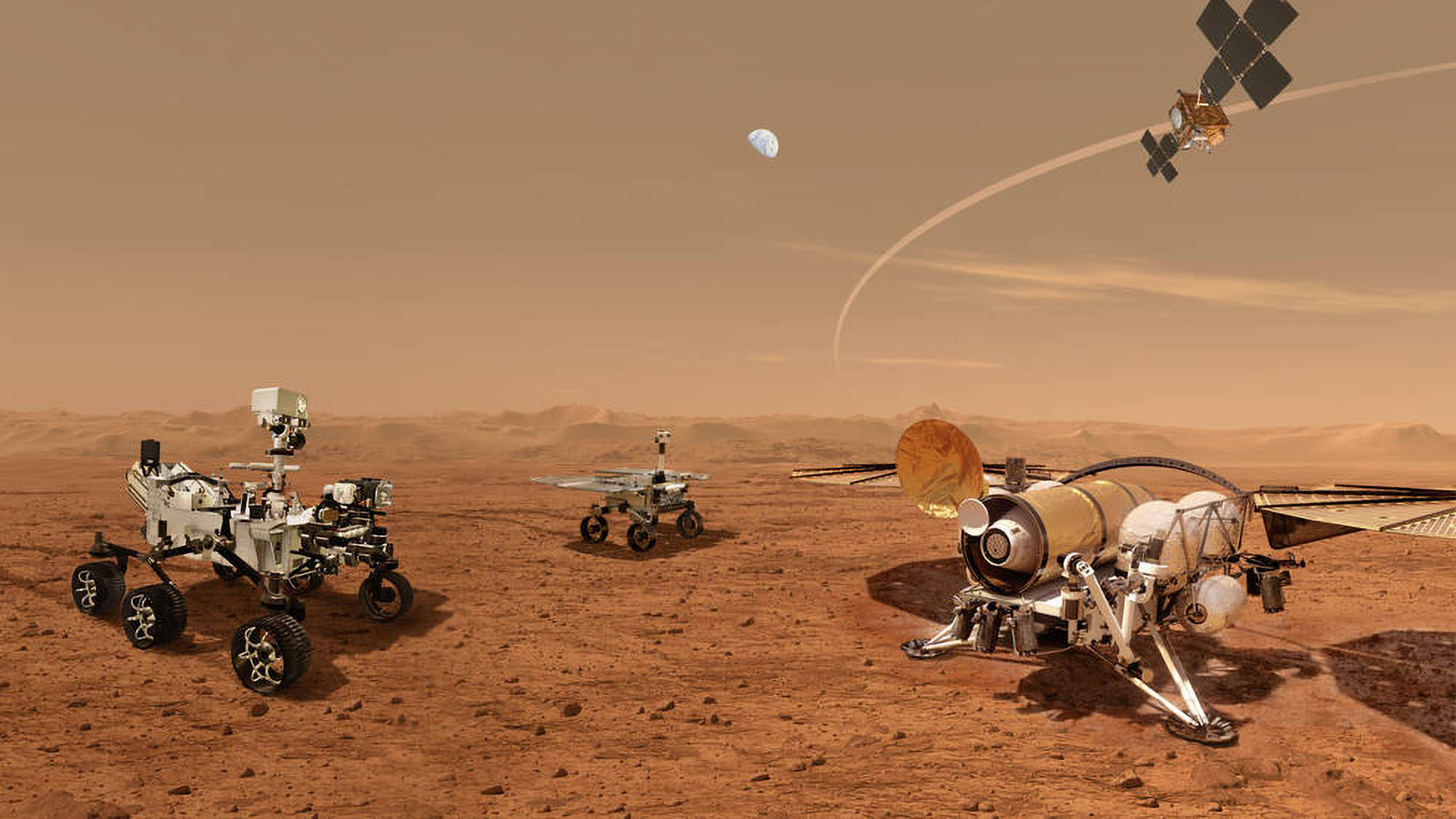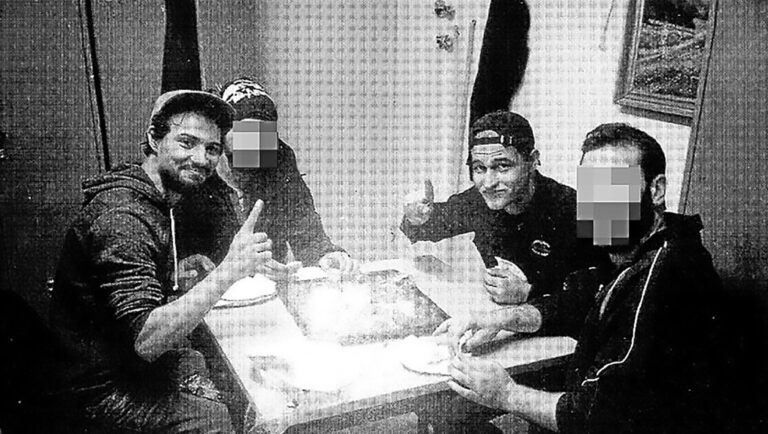After NASA’s Perseverance Rover became the first spacecraft to collect samples on the Red Planet, the incredible plan on how to get the Martian objects back to earth has been revealed.
Animated footage released by NASA illustrates how the rock samples, that could hold the key to understanding the history of the Red Planet, will be returned to Earth.
NASA is working with the European Space Agency (ESA) to execute what NASA describes as “one of the most ambitious endeavours in spaceflight history, involving multiple spacecraft, multiple launches, and dozens of government agencies.”
Michael Meyer, lead scientist for NASA’s Mars Exploration Program, said in a statement released on Tuesday, 12th October:” Returning a sample from Mars has been a priority for the planetary science community since the 1980s, and the potential opportunity to finally realise this goal has unleashed a torrent of creativity.”
Analysing the samples on Earth will allow scientists to use cutting-edge technology in the best-equipped labs on the planet, something which is not possible on Mars.
The machinery required to carry out this type of analysis is too large and complex to be transported to the Red Planet so by bringing the samples ‘home’, scientists hope to uncover secrets about whether life ever existed on Mars.
Meenakshi Wadhwa, principal scientist for the Mars Sample Return program, said: “I have dreamed of having Mars samples to analyse since I was a graduate student.
“The collection of these well-documented samples will eventually allow us to analyse them in the best laboratories here on Earth once they are returned.”
Mars Sample Return would involve several firsts aimed at settling whether life took root anywhere else in the solar system. Daniel Glavin, astrobiologist from NASA’s Goddard Space Flight Center in Greenbelt, Maryland, said: “I’ve been working my whole career for the opportunity to answer this question.”
The Mars Sample Return mission, which is illustrated in the video, will first require an ESA sample-fetch rover to be sent to Mars to pick up samples collected by Perseverance.
The rover would transfer samples to a lander, being developed at JPL. A robotic arm on the lander would pack the samples into the tip of a rocket that is being designed by NASA’s Marshall Space Flight Center in Huntsville, Alabama.
The rocket would deliver the sample capsule to Martian orbit, where an ESA orbiter would be waiting to receive it.
Inside the orbiter, the capsule would be prepared for delivery to Earth by a payload being developed by a team led by the NASA Goddard Space Flight Center.
The orbiter would then make the long journey back to Earth where the samples would be blasted into our atmosphere inside an Earth-entry capsule.
The samples would be stored in a secure biohazard facility that is under construction at the time of writing.

(NASA,JPL-Caltech/Newsflash)
One of the key challenges facing engineers planning the return mission is how they will seal the titanium tubes holding the samples without destroying the items.
Brendan Feehan, Goddard systems engineer for the system that will capture, contain, and deliver the samples to Earth onboard ESA’s orbiter, said that sealing the tubes will involve heating the metal to temperatures in excess of 1,000 degrees Fahrenheit (538 Celsius).
Feehan added: “We have to keep these extraordinary Mars samples below the hottest temperature they might have experienced on Mars, which is about 86 degrees Fahrenheit (30 degrees Celsius).”
Feehan and his team are developing a system that will allow them to limit the heat flow during the sealing process. They also plan to insulate the samples and use conductors to disperse the heat away from the precious payload.
He added: “Initial results from the testing of our brazing solution have affirmed that we’re on the right path.”
NASA also said that it is possible living organisms could be returned in the samples that potentially pose a biohazard risk, and all precautions are being taken.
The statement concluded: “NASA’s rigorous efforts to eliminate the risk of harmful contamination of Earth date to the international Outer Space Treaty of 1967, which calls on nations to prevent contaminating celestial bodies with organisms from Earth, and to prevent contamination of Earth through returned samples.”
To find out more about the author, editor or agency that supplied this story – please click below.
Story By: Peter Barker, Sub-Editor: Lee Bullen, Agency: Newsflash
The Ananova page is created by and dedicated to professional, independent freelance journalists. It is a place for us to showcase our work. When our news is sold to our media partners, we will include the link here.




